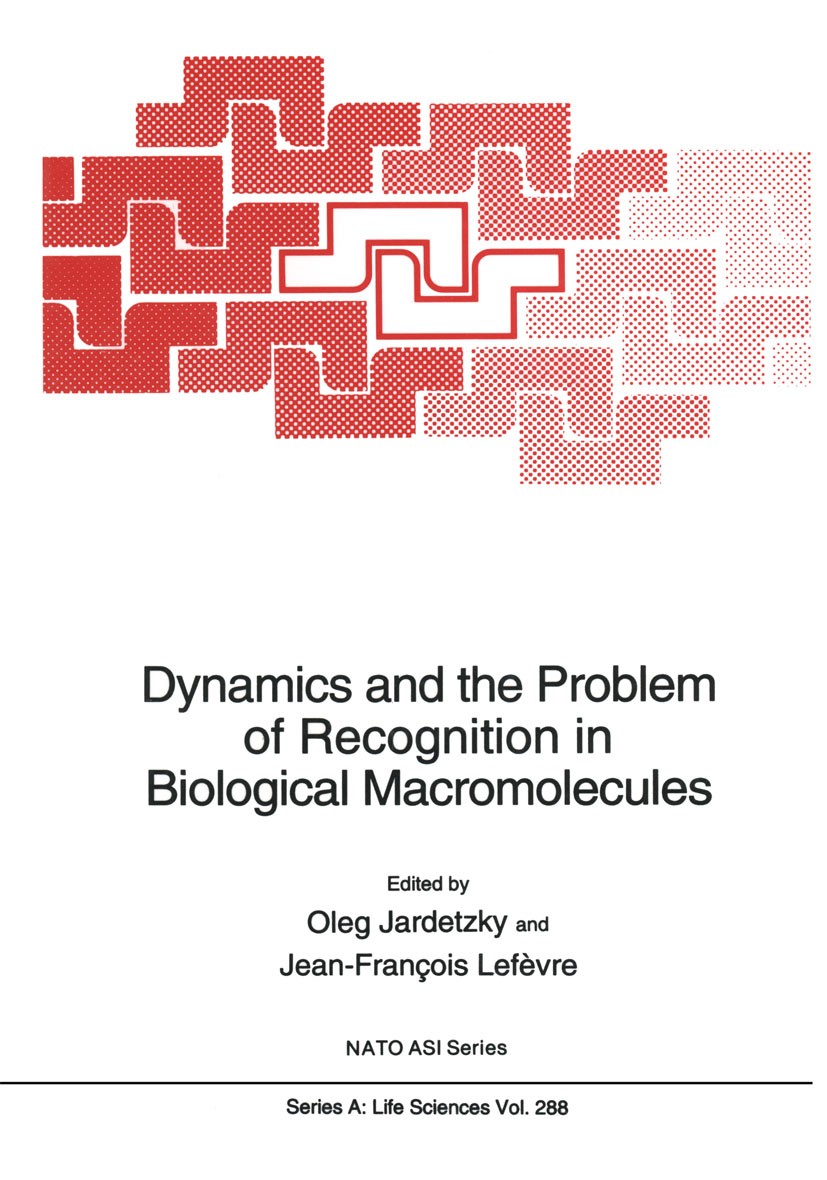| 书目名称 | Dynamics and the Problem of Recognition in Biological Macromolecules |
| 编辑 | Oleg Jardetzky,Jean-François Lefèvre |
| 视频video | http://file.papertrans.cn/284/283986/283986.mp4 |
| 丛书名称 | NATO Science Series A: |
| 图书封面 |  |
| 描述 | From within complex structures of organisms and cells down to the molecular level, biological processes all involve movement. Muscular fibers slide on each other to activate the muscle, as polymerases do along nucleic acids for replicating and transcribing the genetic material. Cells move and organize themselves into organs by recognizing each other through macromolecular surface-specific interactions. These recognition processes involve the mu tual adaptation of structures that rely on their flexibility. All sorts of conformational changes occur in proteins involved in through-membrane signal transmission, showing another aspect of the flexibility of these macromolecules. The movement and flexibility are inscribed in the polymeric nature of essential biological macromolecules such as proteins and nucleic acids. For instance, the well-defined structures formed by the long protein chain are held together by weak noncovalent interac tions that design a complex potential well in which the protein floats, permanently fluctuating between several micro- or macroconformations in a wide range of frequencies and ampli tudes. The inherent mobility of biomolecular edifices may be crucial t |
| 出版日期 | Book 1996 |
| 关键词 | DNA; DNA double helix; cells; polymer; protein; proteins; spectroscopy |
| 版次 | 1 |
| doi | https://doi.org/10.1007/978-1-4615-5839-2 |
| isbn_softcover | 978-1-4613-7677-4 |
| isbn_ebook | 978-1-4615-5839-2 |
| copyright | Springer Science+Business Media New York 1996 |
 |Archiver|手机版|小黑屋|
派博传思国际
( 京公网安备110108008328)
GMT+8, 2025-11-9 00:52
|Archiver|手机版|小黑屋|
派博传思国际
( 京公网安备110108008328)
GMT+8, 2025-11-9 00:52


